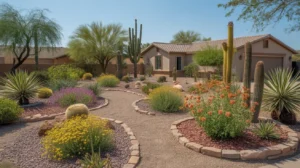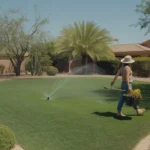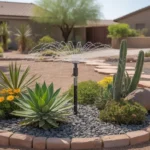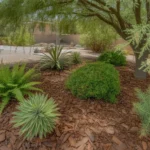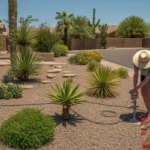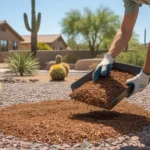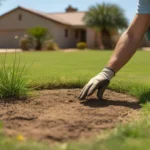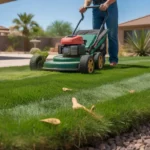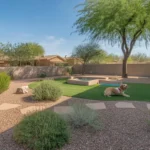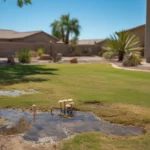With increasingly hot and dry summers in Gilbert, having a drought-tolerant yard is becoming a must. But creating a low-water landscape doesn’t mean sacrificing beauty or style. By making smart plant choices and adopting water-wise practices, you can design an attractive yard that’s both resilient and responsible. Here’s how to drought-proof your Gilbert yard like a pro.
Embrace Xeriscaping Principles
Xeriscaping is a landscaping approach that minimizes water use through clever design. It’s not about creating a barren, rock-filled yard, but rather working with nature and choosing plants well-adapted to Gilbert’s arid climate. The core principles include:
- Grouping plants with similar water needs together
- Improving the soil with organic matter to retain moisture
- Using efficient irrigation methods like drip systems
- Covering exposed soil with mulch to reduce evaporation
One local landscaper explains, “Xeriscaping is all about being strategic. By putting the right plant in the right place and watering smartly, you can have a lush yard that’s also drought-hardy. It’s a win-win.”
When planning your xeriscape, consider creating hydrozones – distinct areas of your yard with plants that have comparable water requirements. This allows you to irrigate efficiently, giving each zone only the water it needs. Hydrozone examples might include a low-water cactus garden, a moderate-water perennial bed, and a higher-water area for vegetables and herbs.
Go Native with Low-Water Plants
Native plants are the champions of drought-tolerant yards. Having evolved to thrive in Gilbert’s desert conditions, they require minimal watering once established. Bonus: they also provide vital habitat for local pollinators and wildlife. Some top native picks for Gilbert include:
- Desert Marigold – Cheery yellow flowers on silvery foliage
- Penstemons – Spikes of tubular blooms in vivid hues
- Globe Mallow – Delicate orange or pink flowers on sprawling plants
- Fairy Duster – Wispy pink puffballs on compact shrubs
- Blackfoot Daisy – Profuse white and yellow daisies most of the year
As one Gilbert native plant enthusiast shares, “I love watching the parade of wildflowers and hummingbirds that my water-wise yard attracts. It feels good to have a landscape that celebrates our desert heritage.”
When selecting native and desert-adapted plants, favor species with small, needle-like, or leathery leaves. These leaf structures help plants conserve moisture and withstand heat. For a cohesive look, repeat clusters of the same low-water plants throughout your yard.
Swap Thirsty Grass for Drought-Tolerant Groundcovers
Traditional grass lawns are one of the biggest water guzzlers in Gilbert yards. Fortunately, there are many attractive, low-water groundcovers that can take their place. Excellent options for Gilbert include:
- Damianita – Mounding perennial with yellow button flowers
- Trailing Rosemary – Fragrant, evergreen herb that cascades beautifully
- Creeping Thyme – Dainty, aromatic foliage ideal for footpaths
- Lantana – Spreading perennial with bright, clustered blooms
As one Gilbert horticulturist notes, “Groundcovers provide visual interest at ground level while suppressing weeds and erosion. Choose varieties that can handle foot traffic if you want a lawn alternative. For slopes or bare spots, opt for trailing types that will spread and knit together over time.”
To transition your yard to groundcovers, remove grass in phases. Start with the periphery or low-use areas, then gradually work inward as plants fill in. Provide temporary irrigation until plants are established, then wean them off to a low-water schedule.
Upgrade to a Smart Irrigation System
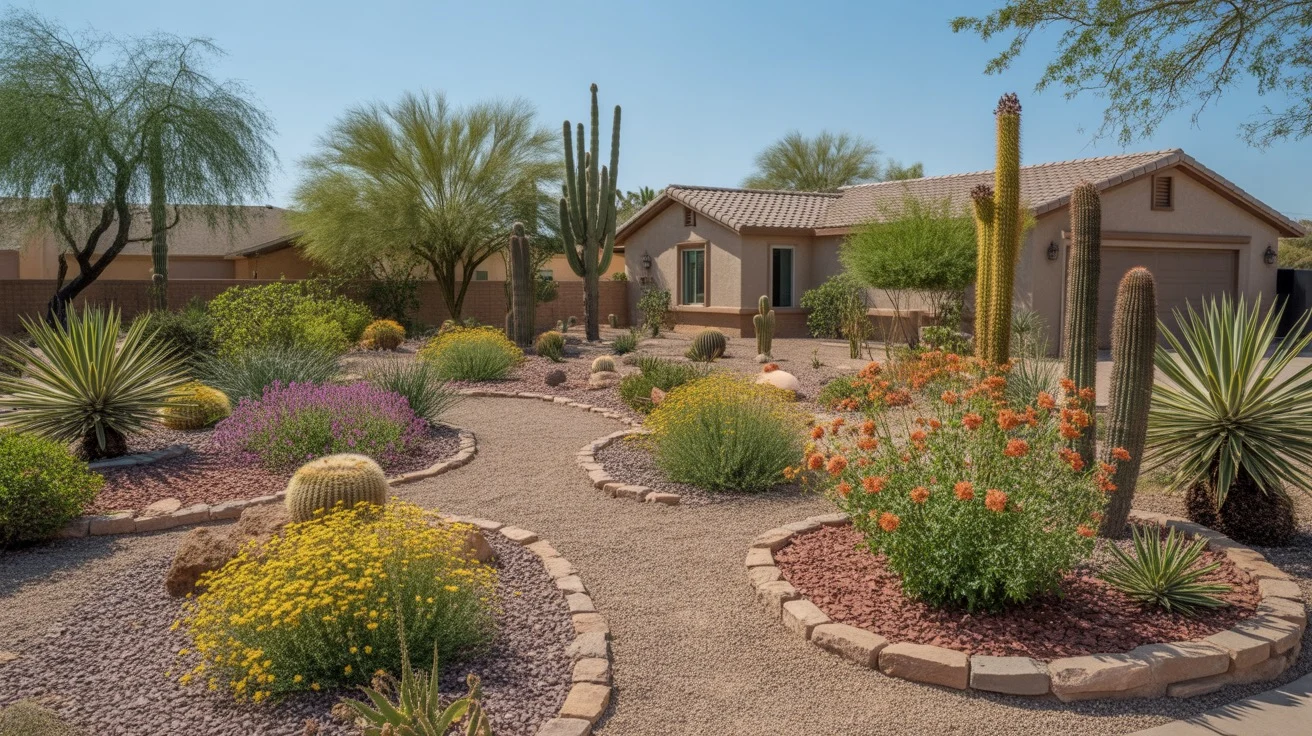
Even drought-tolerant yards need occasional watering, especially during Gilbert’s scorching summers. A smart irrigation controller takes the guesswork out of when and how much to water. These high-tech systems adjust watering automatically based on local weather data and your yard’s unique conditions, ensuring plants get only what they need.
According to one Gilbert irrigation specialist, “Smart controllers are a game-changer for saving water. They can reduce outdoor water use by up to 50% compared to traditional systems. Plus, they’re virtually hands-off once programmed.”
When choosing a smart controller, look for EPA WaterSense-certified models, which meet strict efficiency and performance criteria. Pair your controller with a rain sensor to prevent overwatering during storms. If you have an extensive yard, consider installing a flow sensor to detect and shut off leaks or line breaks.
Mulch Like It’s Your Job
Mulch is a secret weapon in drought-tolerant yards. A 3-4 inch layer of organic mulch, like shredded bark or wood chips, helps soil retain moisture, moderates temperature extremes, and suppresses water-stealing weeds. As it breaks down, mulch also adds nutrients and improves soil structure.
For the most polished look, use the same type of mulch consistently throughout your yard. Avoid mounding mulch against tree trunks or plant stems, which can cause rot. Refresh the mulch layer annually to maintain its moisture-holding benefits.
One Gilbert mulch aficionado raves, “Adding mulch made a night-and-day difference in my yard. My plants are healthier, my soil stays moist longer, and I spend way less time weeding. I’m a total mulch convert!”
Harvest Rainwater for Thrifty Irrigation
In Gilbert’s desert climate, every drop of rain counts. Capturing free rainwater spares your plants from harsh municipal tap water while reducing your water bill. The simplest way to harvest rainwater is with a barrel connected to your gutter downspout. A 1,000 square foot roof can yield 600 gallons per one-inch rainfall – enough to deeply irrigate several trees.
For larger yards, consider a cistern system. Cisterns are big tanks that store rainwater for later use in irrigation. According to one installer, “With a 5,000-gallon cistern, you can potentially meet all your outdoor watering needs for the year just from harvested rainfall. It’s an investment that pays off in the long run.”
When setting up any rainwater harvesting system, make sure to use food-grade, opaque containers with tight-fitting lids to prevent algae growth and mosquito breeding. Place the containers on a sturdy, level surface near the plants you want to water for easier distribution.
By implementing these drought-tolerant strategies, you can create a Gilbert yard that’s not only beautiful but also resilient in the face of water challenges. With the right plants, practices, and irrigation upgrades, you’ll cultivate an outdoor space that’s good for you, your community, and the environment. As one local landscaper sums up, “Drought-proofing your yard is all about working smarter, not harder. By designing with intention, you can spend less time watering and more time enjoying your slice of desert paradise.”

